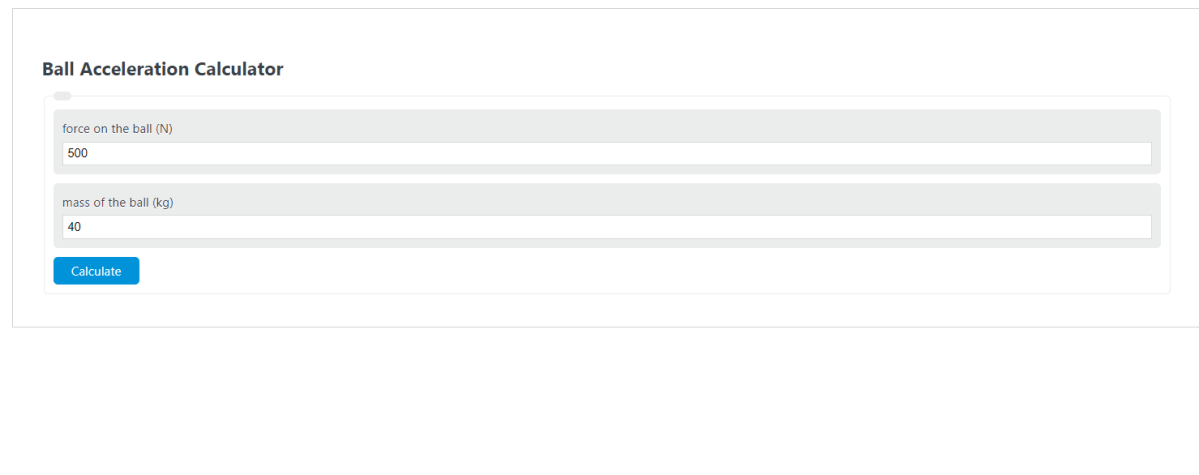Enter the force on the ball and the mass of the ball into the calculator to determine the Ball Acceleration.
- All Acceleration Calculators
- Incline Plane Acceleration Calculator
- Coefficient of Friction to Acceleration Calculator
- Truck Acceleration Calculator
Ball Acceleration Formula
The following equation is used to calculate the Ball Acceleration.
BA = FB/MB
- Where BA is the Ball Acceleration (m/s^2)
- FB is the force on the ball (N)
- MB is the mass of the ball (kg)
To calculate the ball acceleration, divide the ball force by the ball mass.
What are the units for Ball Acceleration?
The most common units for Ball Acceleration are m/s^2.
How to Calculate Ball Acceleration?
Example Problem:
The following example problem outlines the steps and information required to calculate the Ball Acceleration.
First, determine the force on the ball. In this example, the force on the ball is measured to be 500 (N).
Next, determine the mass of the ball. For this problem, the mass of the ball is calculated to be 40 (kg).
Finally, calculate the Ball Acceleration using the formula above:
BA = FB/MB
Inserting the values from above and solving the equation gives us:
BA = 500/40 = 12.5 (m/s^2)
FAQ
What factors can affect the acceleration of a ball?
Several factors can influence the acceleration of a ball, including the force applied, the mass of the ball, air resistance, the angle of release, and the surface on which the ball is moving. Changes in any of these factors can alter the ball’s acceleration.
How does changing the mass of the ball affect its acceleration?
According to Newton’s second law of motion, the acceleration of an object is inversely proportional to its mass when the force applied is constant. This means that increasing the mass of the ball will decrease its acceleration, while decreasing the mass will increase its acceleration, assuming the force applied remains unchanged.
Can the ball acceleration formula be used for objects other than balls?
Yes, the ball acceleration formula (BA = FB/MB) is a specific application of Newton’s second law of motion (F = ma), where F is the force applied to an object, m is the mass of the object, and a is the acceleration. Therefore, this formula can be used to calculate the acceleration of any object, not just balls, as long as you know the force applied to the object and its mass.
